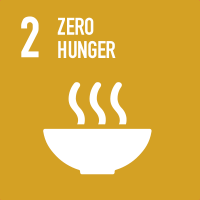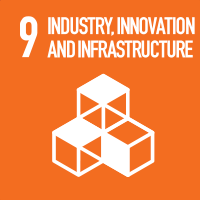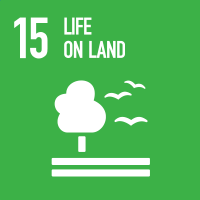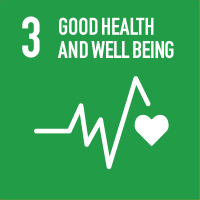Studying at the University of Verona
Here you can find information on the organisational aspects of the Programme, lecture timetables, learning activities and useful contact details for your time at the University, from enrolment to graduation.
Study Plan
The Study Plan includes all modules, teaching and learning activities that each student will need to undertake during their time at the University.
Please select your Study Plan based on your enrollment year.
1° Year
| Modules | Credits | TAF | SSD |
|---|
2° Year activated in the A.Y. 2023/2024
| Modules | Credits | TAF | SSD |
|---|
3° Year activated in the A.Y. 2024/2025
| Modules | Credits | TAF | SSD |
|---|
1 module among the following1 module among the following| Modules | Credits | TAF | SSD |
|---|
| Modules | Credits | TAF | SSD |
|---|
| Modules | Credits | TAF | SSD |
|---|
1 module among the following1 module among the following| Modules | Credits | TAF | SSD |
|---|
Legend | Type of training activity (TTA)
TAF (Type of Educational Activity) All courses and activities are classified into different types of educational activities, indicated by a letter.
General and food microbiology with laboratory (2023/2024)
Teaching code
4S010598
Credits
9
Language
Italian
Scientific Disciplinary Sector (SSD)
BIO/19 - MICROBIOLOGY
Courses Single
Not Authorized
The teaching is organized as follows:
Microbiologia generale
Credits
6
Period
Semester 1
Academic staff
Sandra Torriani
Laboratorio
Microbiologia degli alimenti
Learning objectives
The course is designed to introduce students to the basic knowledge of the microbial world as well as to illustrate the main methodological tools for research in microbiology, with a detailed comparison of the properties among the different type of microorganisms, both prokaryotes and eukaryotes, including bacteria, archaea, yeasts, filamentous fungi, and - in a distinct section, since non-cellular organisms – the viruses. During the first series of lectures, general themes will be addressed such as morphological and functional diversity, genetic, biochemical and metabolic features, evolutionary aspects and ecology of microorganisms, including how they interact with specific environmental factors. In the second series of lectures, microorganisms will be discussed as reference systems for fundamental studies dealing with molecular biology as well as biochemistry and metabolic regulatory mechanisms. Also elements will be provided about the methods for microbe cultivation and on strategies for the control of microbial growth and the conditioning of the metabolism. The third part of lectures will cover the detailed study of particularly important microbial groups to be defined with the Students.
The laboratory module is designed to guide students in the acquisition of techniques and in the development of manipulative skills all necessary for the identification and the study of both structural and functional characteristics of the microorganisms of interest, as well as for a proper handling of microbial cultures within research activities. The main objective of the module is to provide students with the basic tools, represented by traditional analytical procedures in microbiology, but also with the knowledge of advanced techniques, based on molecular methods of investigation, useful for basic research but even the definition of the correct approach to issues related to the many themes of applied microbiology.
Examination methods
There are no ongoing tests. The exam will consist of an oral assessment of the degree of learning achieved on the entire course program. The exam consists of three or four questions posed to each candidate. The exam has a total duration of approximately 30 minutes. The final evaluation is expressed out of thirty. At the end of the practice lessons the student should be draw up a report on the activity carried out in laboratory. The manuscript will be considered during the test.
Prerequisites and basic notions
First year courses.
Program
The General Microbiology module will cover the following topics:
1. EVOLUTION AND DIVERSITY OF MICROORGANISMS: Origin and evolution of microbial life forms; Bacteria; Archaea; Origin of the eukaryotic cell and eukaryotic microorganisms; Taxonomy and systematics of microorganisms.
2. FUNDAMENTALS OF MICROBIOLOGY: Structure and function in Bacteria, Archaea, and Fungi (yeasts and filamentous fungi);
3. MICROBIAL GROWTH: Principles of nutrition and cultivation of microorganisms and characteristics of microbial growth; Antimicrobial agents and methods for controlling microbial growth.
4. METABOLIC DIVERSITY: Phototrophy and autotrophy, aerobic respiration (Embden-Meyerhof-Parnas pathway, Enther-Doudoroff pathway, Hexose Mono-Phosphate pathway + electron transport chain and generation of proton-motive force) and respiration anaerobic, Fermentations (homolactic, heterolactic, acid-mixed, butane-diolic, propionic, butanol/acetone), Chemolithotrophy; Other biosynthetic pathways.
5. VIRUSES: Review of the different viral groups; bacteriophages.
6. OUTLINE of BACTERIAL GENETICS: Genetic recombination: transformation, conjugation, transduction and MOLECULAR BIOLOGY OF MICROORGANISMS AND GENE EXPRESSION: Regulation of gene expression.
7. MICROBIAL INTERACTIONS. Type of relationships between microorganisms (commensalism, parasitism, mutualism). Microbial consortia. Symbiotic associations: interactions between species. Mycorrhizae.
8. MICROBIAL BIODIVERSITY AND STUDY METHODS: Cultivable and non-cultivable microbial biodiversity. Identification, classification, and nomenclature of cultivable biodiversity. Nomenclature: rules and tools (Nomenclature Code and LPSN - List of Prokaryotic Names with Standing in Nomenclature). The concept of species, the definition of strain and type strain. The classical systematic approaches (phenetic, numerical, polyphasic), the phylogenetic approach. The investigation techniques, from total DNA hybridization to the sequencing and comparison of genomes and levels of taxonomic resolution. Non-cultivable biodiversity: culture-independent study techniques (PCR-DGGE, metabarcoding, metagenomics) and their nomenclature (Candidatus).
9. GROUPS OF MICROORGANISMS: The taxonomic levels and main groups of microorganisms Proteobacteria, Firmicutes, Actinobacteria, Deinococcus-Thermus.
The Food Microbiology module will deal with the use and role of microorganisms in the food context, the relationship between foods and the microorganisms that develop in them, to guarantee microbiological safety and quality in food chains. Furthermore, the use of microbial processes for the production of fermented and functional foods will be presented. Specifically, the course will cover:
- Sources of contamination of microorganisms in foods.
-Microbial ecology applied to foods.
- Main characteristics and role of protechnological, spoilage and pathogenic microorganisms in foods.
- Microorganisms and diet: impact of microorganisms on hygienic safety and sensorial and nutritional quality of foods. - Fermented foods. Selection and use of starter cultures.
- The human microbiome as a target for intervention through functional foods. Probiotics, Prebiotics, Symbiotics
Didactic methods
Frontal lessons
Learning assessment procedures
The exam will consist of an oral evaluation of the level of learning achieved in the entire course program. The exam consists of three or four questions asked of each candidate. The exam lasts approximately 30 minutes in total. The final evaluation is expressed in thirtieths. At the end of the practical lessons, the student must write a report reporting what was done in the laboratory. This report will be considered during the exam.
Evaluation criteria
The evaluation criteria are the level of learning achieved on the course program, the clarity of presentation, the ownership of the specific technical-scientific language.
Criteria for the composition of the final grade
The course must be considered passed if a score of at least 18 is achieved and the overall grade is determined on the basis of the assessments achieved in each module.
Exam language
Italiano




